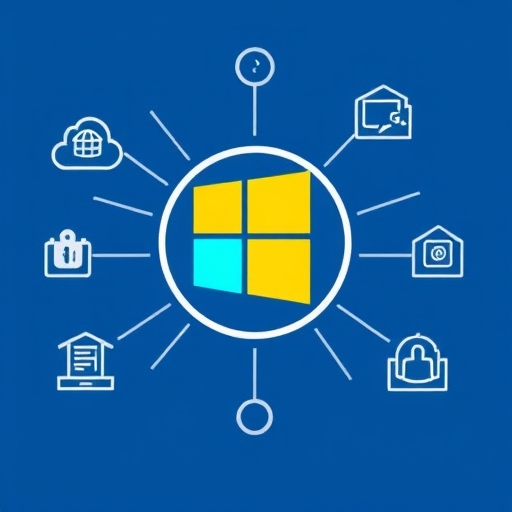Azure Cloud, DevOps resources and blog
-

How Microsoft Entra ID is used as a directory for cloud apps
Microsoft Entra ID (formerly Azure Active Directory, or Azure AD) is used as a cloud-based directory service that manages and secures user identities, access, and permissions for cloud applications. It serves as a central identity provider for applications, services, and resources both within Microsoft’s ecosystem… [ Read more ]
-

Azure Virtual Network explained in detail
Azure Virtual Network (VNet) is one of the fundamental building blocks in Azure that allows you to securely connect Azure resources to each other, the internet, and on-premises environments. It provides a private network where you can define and control the IP addressing, DNS settings,… [ Read more ]
-

Compare Microsoft Entra ID to Active Directory Domain Services (AD DS)
Microsoft Entra ID (formerly Azure Active Directory, or Azure AD) and Active Directory Domain Services (AD DS) are both identity and access management solutions provided by Microsoft, but they serve different purposes and are designed for different environments. Below is a comparison of the two:… [ Read more ]
-

Subnets and Subnetting in Azure – Features and Use-cases
In Azure, subnets are an integral part of your Virtual Network (VNet) architecture. Subnets allow you to partition a VNet's IP address space into smaller, more manageable segments. Subnetting helps you organize and control the flow of network traffic, segment security policies, and ensure efficient… [ Read more ]
-

Know everything about Azure Virtual Network – Features and Components
An Azure Virtual Network (VNet) is one of the foundational building blocks for your private network in Azure. It allows Azure resources to securely communicate with each other, the internet, and on-premises networks. Azure VNets provide isolation, segmentation, and secure communication between virtual machines (VMs),… [ Read more ]
-

Comprehensive guide on the Service Hooks in Azure DevOps
Comprehensive guide on the Service Hooks in Azure DevOps Azure DevOps provides Service Hooks that allow seamless integration with various services across different categories, including Build and Release, Collaborate, Customer Support, Plan and Track, and Integrate. These hooks help automate workflows and streamline processes by… [ Read more ]
-

Exploring Service Hooks in Azure DevOps
Exploring Service Hooks in Azure DevOps Service Hooks in Azure DevOps allow you to integrate with external services to automate actions or receive notifications when specific events occur. This helps create a more streamlined DevOps workflow by connecting Azure DevOps with tools like Slack, GitHub,… [ Read more ]
-

Exploring Events and Notifications in Azure DevOps
Exploring Events and Notifications in Azure DevOps Events in Azure DevOps trigger actions when specific conditions are met, while Notifications allow you to receive updates based on those events. Together, they help automate and monitor deployments, builds, and other DevOps processes. 1. Events in Azure… [ Read more ]
-

Automating inspection of health in Azure DevOps
Automating inspection of health in Azure DevOps Automating the inspection of health in Azure DevOps involves setting up processes to monitor the status of deployments, trigger actions based on events, and ensure that systems are functioning as expected. This can include using features like Release… [ Read more ]
-

Microsoft Entra ID P1 and P2 premium plans: Quick Comparison
Microsoft Entra ID (formerly Azure Active Directory or Azure AD) offers several tiers of subscription plans designed to meet different organizational needs for identity and access management Entra ID P1 and Entra ID P2 are two premium plans that provide advanced features beyond the basic… [ Read more ]
-
Understand the essential information about the built-in Log Queries in Azure
Azure offers a variety of built-in log queries that can be accessed via Azure Monitor and Log Analytics. These queries are predefined to help users quickly gain insights from their Azure resources and services. Built-in queries typically focus on common use cases such as monitoring… [ Read more ]
-

Comprehensive guide on the Deployment Jobs strategies in Azure DevOps multi-stage YAML
Comprehensive guide on the Deployment Jobs strategies in Azure DevOps multi-stage YAML In Azure DevOps Multi-stage YAML pipelines, various deployment strategies can be employed to optimize the deployment process. Below is an exploration of RunOnce, Rolling, and Canary deployment strategies, along with a specific example… [ Read more ]
-

Exploring Deployment Jobs strategies in Azure DevOps multi-stage YAML – Canary for AKS example
Exploring Deployment Jobs strategies in Azure DevOps multi-stage YAML – Canary for AKS example A Canary Deployment strategy for Azure Kubernetes Service (AKS) involves deploying updates to a small set of Kubernetes pods or services to validate changes before scaling them across the entire AKS… [ Read more ]
-

Exploring Deployment Jobs strategies in Azure DevOps multi-stage YAML – Canary Deployment
Exploring Deployment Jobs strategies in Azure DevOps multi-stage YAML – Canary Deployment A Canary Deployment is a progressive deployment strategy where a small subset of users or a small portion of resources are used to validate updates in a production-like environment before fully rolling out… [ Read more ]



















